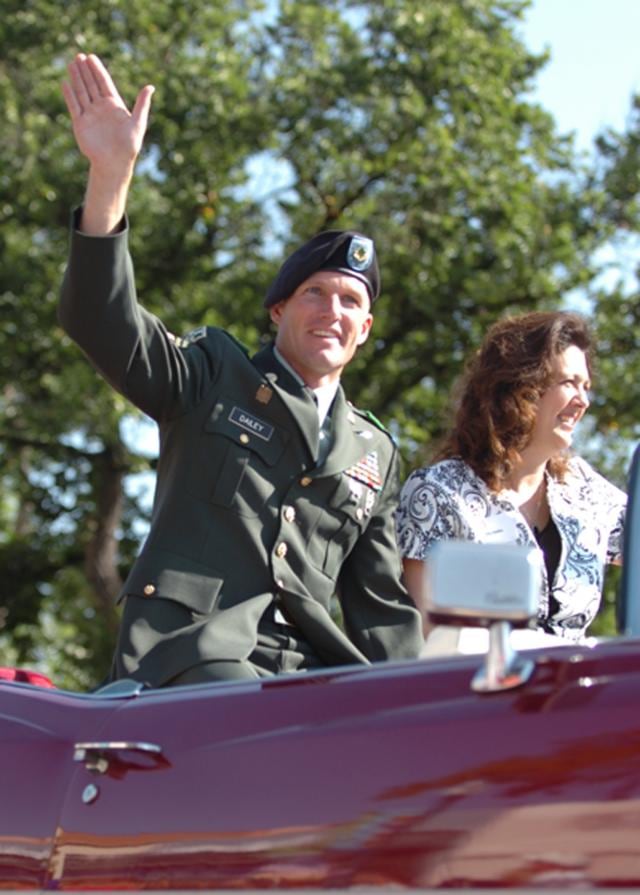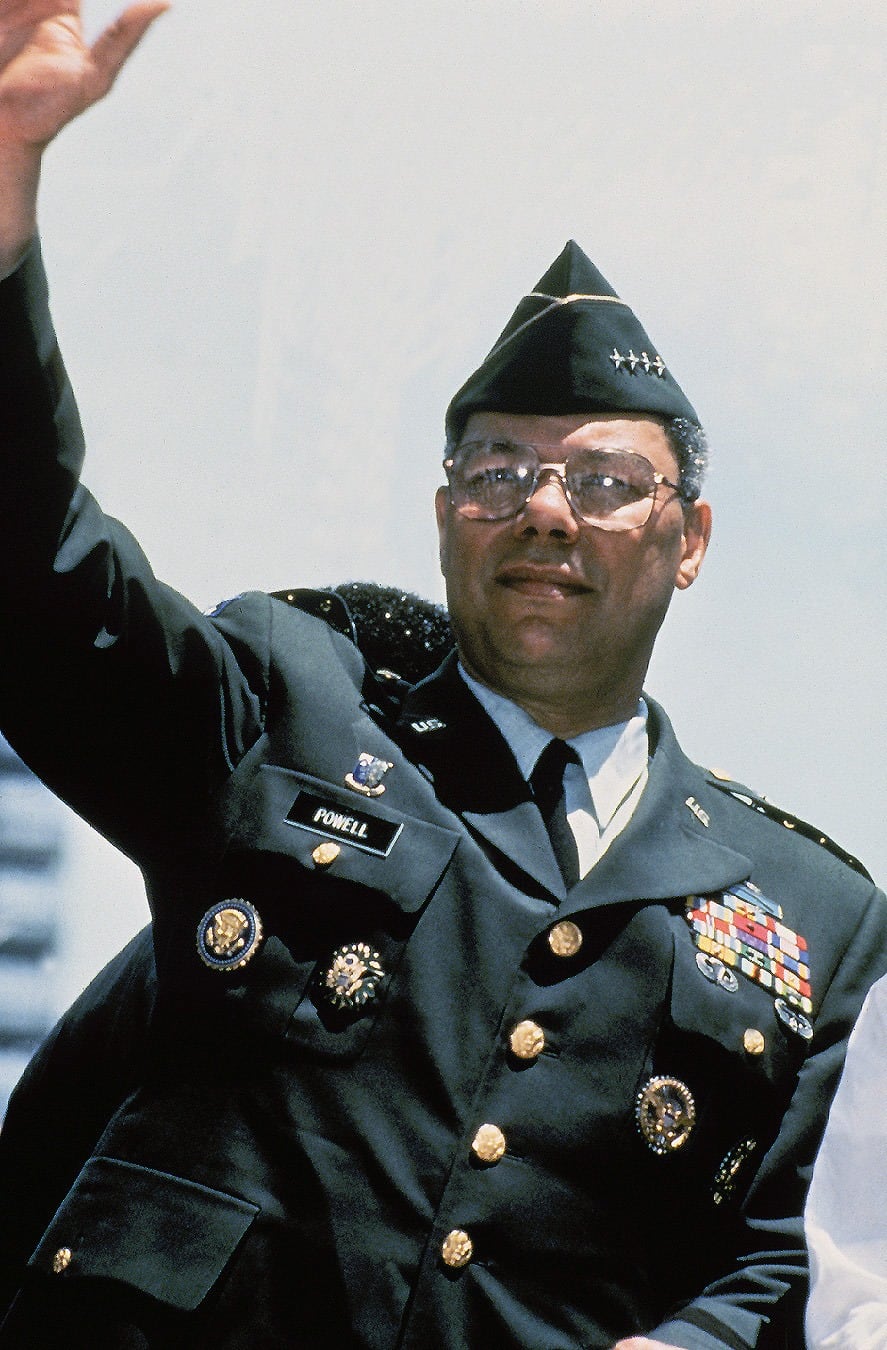The green service uniform has finally been laid to rest after 61 years of approved wear, the vast majority of that stretch as the service uniform that defined the Army.
From 1902 through World War II soldiers had worn wore an olive and/or khaki/tan combination of some sort. But then the Army wanted a sharp, classic and dignified look to distinguish soldiers in a postwar era.

In this file photo, Sergeant Major of the Army Dan Dailey wears his green Class As.
Photo Credit: Army
The jacket featured four buttons, matching pants, light gray undershirt and black tie (in contrast with the khaki undershirt and tie in the Marine Corps' green service uniform). The green uniform experienced only minor alterations since; from Vietnam to the early years of Iraq and Afghanistan, it served as the primary dress uniform.
The Army had worn wore blue from the Revolution through the Spanish American War. (Exception: due to a shortage of blue cloth, the Army issued gray uniforms as a substitute to some soldiers from 1812-1821 ; West Point Cadets also adopted the gray coats in that time and still wear the color today.) But in 1902 the Army introduced olive drab and khaki service uniforms. While that year's Order 81
; West Point Cadets also adopted the gray coats in that time and still wear the color today.) But in 1902 the Army introduced olive drab and khaki service uniforms. While that year's Order 81 eliminated blue, a phase out continued in the ensuing years; blue full-dress uniforms remained authorized until 1917.
eliminated blue, a phase out continued in the ensuing years; blue full-dress uniforms remained authorized until 1917.

Gen. Colin Powell rocking the Army green.
Photo Credit: MSGT DON WETTERMAN, USA
The Green Class As were born largely of the Army's desire to restore dignity and prestige to a uniform the Army saw had seen become diluted and often sullied due to extensive wear by veterans and non-veterans alike after World War II. Nationwide, "Olive Drab" Army uniforms became a ubiquitous and inexpensive clothing items of the late 1940s. By the last year of the war, the Army had more than 8 million active duty members — nearly 6 percent of the entire U.S. population. Many would go home and wear out their uniforms; many other uniforms turned up in surplus stores.
were born largely of the Army's desire to restore dignity and prestige to a uniform the Army saw had seen become diluted and often sullied due to extensive wear by veterans and non-veterans alike after World War II. Nationwide, "Olive Drab" Army uniforms became a ubiquitous and inexpensive clothing items of the late 1940s. By the last year of the war, the Army had more than 8 million active duty members — nearly 6 percent of the entire U.S. population. Many would go home and wear out their uniforms; many other uniforms turned up in surplus stores.
In an article for a May/June 1954 issue of "The Quartermaster Review," Major A. M. Kamp Jr. decried the resulting debasement of the uniform — including wear by criminals and prison inmates — and its effect on the Army's reputation and morale.
"The soldier, being constantly confronted with the debauching of his uniform ... soon loses pride in wearing it. His prestige is gradually being degraded because of the contempt shown the uniform," Kamp wrote. "Since 1946 this has been one of the biggest stopgaps to the adoption of a new uniform for the Army. Prestige and morale, the basis for building and maintaining a spirited, well-trained Army, have suffered as a result, in addition to the fact that the Army apparently has no exclusive rights to the wearing of the uniform."
This leald to the Army Green Uniform, which replaced the old ODs and became the official uniform the year after the Korean War armistice. The service uniform went on to a long life. It was not only the uniform worn by generals-to-enlisted soldiers, but also a variety of famous soldier-playing actors in then-contemporarymovies.

Gen. David Petraeus briefs reporters at the Pentagon on April 26, 2007, on Iraq.
Photo Credit: R.D. Ward/DoD
While green dominated, Army actually had three types of service dress uniforms by the turn of the millennium. The white service uniformhad been was introduced as a summer uniform in 1902 and remained optional until last year. And between World Wars, the blue dress uniform re-emerged as optional wear, and remained so after introduction of the Green Class As as the primary service uniform.
as the primary service uniform.
But in 2006 Army Chief of Staff Gen. Peter Schoomaker announced the Army's plans to streamline its wardrobe and make the blues king. He notably rolled the Army Service Uniform out at the 2007 State of the Union address.
An All-Army Activities message in 2008 formally informed the Greens they had but six years to live. The green service uniform is survived by the Class A and Class B Army Service Uniform. The greens at this time had lost favor among troops, in-part because the stiff, dated polyester fabric was unchanged from the 1970s.
The ASU's blue color represents a nod to the first century-plus of the Army, from the Revolution to the Civil War and Spanish American War. The blues became standard issue in 2010 and from there quickly became the most popular service uniform. The Army added a year to the life to the condemned Green Class A uniform in a 2011 ALARACT, pushing back the wear-out date until 2015. But the green uniforms had already faded significantly in prominence, limping to the end of the road.





